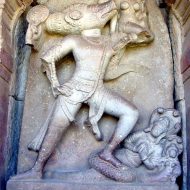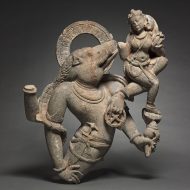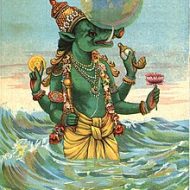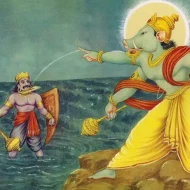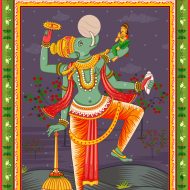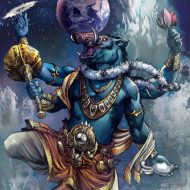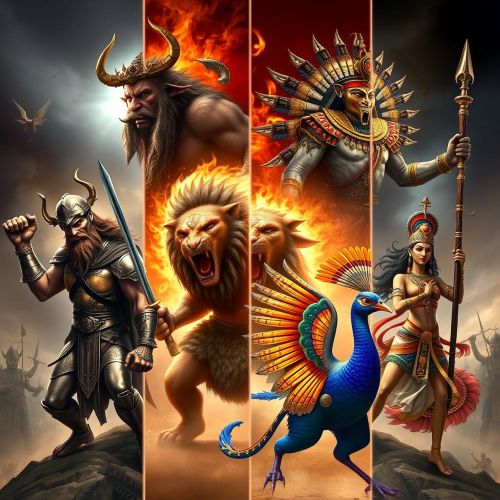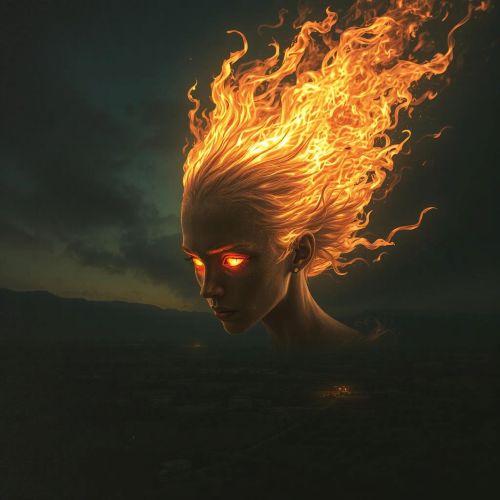Varaha : The Boar Avatar
Listen
At a glance
| Description | |
|---|---|
| Origin | Indian Mythology |
| Classification | Animals |
| Family Members | N/A |
| Region | India, Sri Lanka, Thailand, Vietnam, Cambodia, Indonesia, Nepal, Bhutan |
| Associated With | Lifting of the earth |
Varaha
Introduction
The third avatar of Vishnu, also known as Varaha, was created to save the Earth from a demon known as Hiranyaksha. After a thousand years of fighting, the Hindu god took the beast’s form and lifted it out of the sea using his tusks. This myth is based on a creation legend of Prajapati, who sculpted a boar to lift the earth out of the ocean.
The legend of Varaha refers to the deity’s ability to remove the Earth, which is regarded as Bhudevi, from the cosmic ocean. When an asura known as Hiranyaksha abducted the planet and hid it in the primordial ocean, Vishnu appeared as boar named Varaha and slew the asura. He then lifted the Earth using his tusks.
Physical Traits
According to various descriptions, Varaha is enormous. He is said to be around ten yojanas, which are Vedic units that measure distance, and one thousand yojnas in height. His eyes are intense, flashing lightning, and he possesses the powerful stride of a large cat. and he has terrifying teeth that are sharp.
There are two kinds of images of Varaha. One of these is shows him as a boar, while the other depicts him as a man with the head of a boar on a human body. Sculptures of the latter variation usually depict him as having four hands, which carry the shankha (conch-shell), chakra (discus), gada (mace) and the padma (lotus).
He is usually depicted as a black creature with a black consort, who is either Bhumidevi or Lakshmi, the earth goddess. Various images show him either sniffing or holding the planet. These depictions date back to the second century CE, and they are believed to be predating the fully-boar versions.
Family
For years, Hiranyaksha was a devotee of Lord Brahma. The Hindu god granted him a boon, and according to the boon no deity, human, beast, or animal would kill him. Because of his immortality, he started torturing people, causing the sky to crack as he shouted. When the demon attacked the palace of Indra, the Devtas hid in the caves of the mountain ranges. Hiranyaksha then submerged the Earth in the ocean. Fearing that the planet might be destroyed due to his actions, Lord Brahma asked Vishmu to help save it.
As Lord Brahma was speaking to Vishnu, a tiny boar appeared from his nostrils. After a while, the animal grew and grew until it was a massive mountain. Vishnu then said that he would go into the ocean to save the Earth from the demon. He took the form of a boar to kill Hiranyaksha because while getting the boon from Lord Brahma, among all the animals, Hiranyaksha forgot to mention boar as an animal.
As a terrifying roar filled the air, Vishnu, who was in the form of a boar, leaped into the ocean and took out the clouds with his hooves. He then dived to the ocean’s bottom and found the planet in its entirety. The boar had just dug its tusk into the ocean’s bottom, and it lifted the planet onto its back. As the creature made its way toward the surface, Hiranyaksha, armed with a mace, rushed at him. As the Avatar of Vishnu made his way toward the ocean, he gently placed the Earth on its axis and blessed it. As the two battled, the boar raised its weapon and the demon threw his own.
Brahma told Vishnu that he had only an hour before sunset, and he must destroy the demon to prevent him from using his black magic. After hearing the Hindu god’s message, Hiranyaksha threw away his weapon. He then started hitting the boar with his fists. Varaha then threw his fist at Hiranyaksha and hit him on the head. He fell to the ground and died.
Other names
The Sanskrit name of the deity is Varaha, which literally means “wild boar.” The word varaha came from the Proto-Indo-Iranian word “warajha,” which literally means “wild boar,” and is related to terms such as Avestan “varaza”, Kurdish “beraz” and New Persian “goraza.”
Powers and Abilities
The appearance of Varaha signifies the transition from amphibian to mammal life. It is believed that in the basic version of the Varaha myth, the animal must conquer the water to save the world. The Hindu deity is depicted as a boar because of its various attributes. Its four legs represent the Vedas, its tongue represents the sacred fire, its head is represented by the Brahmana priest, and its nostrils are filled with ghee. Besides being seen as a creature who saves the world, Varaha also has a prominent place in the ceremonies that are held to maintain it. This shows the power of Vishnu as the protector god.
Modern Day Influence
Varaha continues to be venerated and worshipped by millions of Hindus worldwide. Temples dedicated to Varaha exist in different parts of India, and festivals associated with his avatar are celebrated with great enthusiasm. Varaha’s iconography is a popular subject in Indian art and sculpture. His images, along with other avatars of Vishnu, are often depicted in temples, paintings, and artwork. It is important to note that while Varaha is an essential figure in Hinduism, his influence primarily extends within Hindu communities. Different cultures and religions may not have direct associations with this deity, but they may have similar themes of protection, rescue, or divine incarnations in their own respective belief systems.
Related Images
Frequently Asked Questions
What is lorem Ipsum?
I am text block. Click edit button to change this text. Lorem ipsum dolor sit amet, consectetur adipiscing elit. Ut elit tellus, luctus nec ullamcorper mattis, pulvinar dapibus leo.
What is lorem Ipsum?
I am text block. Click edit button to change this text. Lorem ipsum dolor sit amet, consectetur adipiscing elit. Ut elit tellus, luctus nec ullamcorper mattis, pulvinar dapibus leo.
What is lorem Ipsum?
I am text block. Click edit button to change this text. Lorem ipsum dolor sit amet, consectetur adipiscing elit. Ut elit tellus, luctus nec ullamcorper mattis, pulvinar dapibus leo.
What is lorem Ipsum?
I am text block. Click edit button to change this text. Lorem ipsum dolor sit amet, consectetur adipiscing elit. Ut elit tellus, luctus nec ullamcorper mattis, pulvinar dapibus leo.
What is lorem Ipsum?
I am text block. Click edit button to change this text. Lorem ipsum dolor sit amet, consectetur adipiscing elit. Ut elit tellus, luctus nec ullamcorper mattis, pulvinar dapibus leo.

